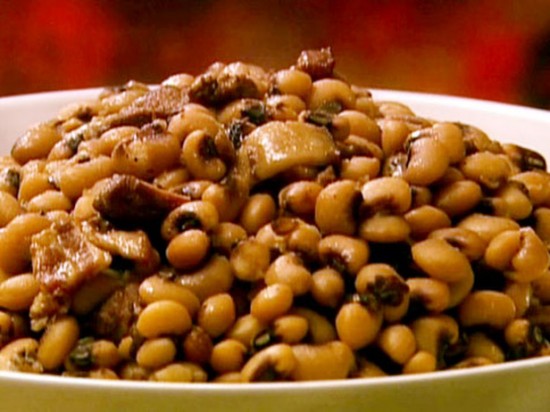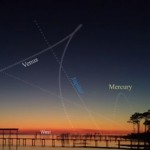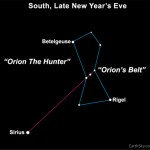She’s baa-aack.
Remember Stephanie Seneff? When last Orac discussed her, she had been caught dumpster diving into the VAERS database in order to torture the data to make it confess a “link” between aluminum adjuvants in vaccines and acetaminophen and—you guessed it!—autism. It was a bad paper in a bad journal known as Entropy that I deconstructed in detail around two years ago. As I said at the time, I hadn’t seen a “review” article that long and that badly done since the even more horrible article by Helen Ratajczak entitled Theoretical aspects of autism: Causes–A review (which, not surprisingly, was cited approvingly by Seneff et al). Seneff, it turns out, is an MIT scientist, but she is not a scientist with any expertise in autism, epidemiology, or, for that matter, any relevant scientific discipline that would give her the background knowledge and skill set to take on analyzing the epidemiological literature regarding autism. Indeed, she is in the Computer Science and Artificial Intelligence Laboratory at MIT, and her web page there describes her thusly:
Stephanie Seneff is a Senior Research Scientist at the MIT Computer Science and Artificial Intelligence Laboratory. She received the B.S. degree in Biophysics in 1968, the M.S. and E.E. degrees in Electrical Engineering in 1980, and the Ph.D degree in Electrical Engineering and Computer Science in 1985, all from MIT. For over three decades, her research interests have always been at the intersection of biology and computation: developing a computational model for the human auditory system, understanding human language so as to develop algorithms and systems for human computer interactions, as well as applying natural language processing (NLP) techniques to gene predictions. She has published over 170 refereed articles on these subjects, and has been invited to give keynote speeches at several international conferences. She has also supervised numerous Master’s and PhD theses at MIT. In 2012, Dr. Seneff was elected Fellow of the International Speech and Communication Association (ISCA).
In recent years, Dr. Seneff has focused her research interests back towards biology. She is concentrating mainly on the relationship between nutrition and health. Since 2011, she has written over a dozen papers (7 as first author) in various medical and health-related journals on topics such as modern day diseases (e.g., Alzheimer, autism, cardiovascular diseases), analysis and search of databases of drug side effects using NLP techniques, and the impact of nutritional deficiencies and environmental toxins on human health.
So what we have here is a computer scientist interested in artificial intelligence who thinks she can switch her expertise to medicine, biology, and epidemiology. Let’s just put it this way. An undergraduate degree in biophysics in 1968 does not qualify one to do this sort of research, and, as I discussed in her foray into autism and vaccine epidemiology, it really does show. Badly. The paper was so embarrassingly incompetent that I’m surprised any journal was willing to publish it.
Just before Christmas, a bunch of articles started making the rounds in the usual places citing a senior MIT scientist as proclaiming mind-numbingly ridiculous things like,
>Half of All Children Will Be Autistic by 2025, Warns Senior Research Scientist at MIT and, just the other day, MIT scientist links autism to Monsanto’s Roundup and predicts HALF of U.S. children will be autistic by 2025. Here’s how it’s been reported:
At a conference last Thursday, in a special panel discussion about GMOs, she took the audience by surprise when she declared, “At today’s rate, by 2025, one in two children will be autistic.” She noted that the side effects of autism closely mimic those of glyphosate toxicity, and presented data showing a remarkably consistent correlation between the use of Roundup on crops (and the creation of Roundup-ready GMO crop seeds) with rising rates of autism. Children with autism have biomarkers indicative of excessive glyphosate, including zinc and iron deficiency, low serum sulfate, seizures, and mitochondrial disorder.
A fellow panelist reported that after Dr. Seneff’s presentation, “All of the 70 or so people in attendance were squirming, likely because they now had serious misgivings about serving their kids, or themselves, anything with corn or soy, which are nearly all genetically modified and thus tainted with Roundup and its glyphosate.”
I must admit, when I clicked on the link to the “correlation,” I couldn’t stop laughing. It was one of the most hilarious examples of confusing correlation with causation that I’ve ever seen. Take a look:

As I’ve pointed out time and time again, if you look at two different variables that have shown an increase with time, you can almost always make it look as though there’s a correlation. Only occasionally does that correlation equal causation. It was that claim that the “autism epidemic” began (i.e., autism prevalence started increasing dramatically) beginning in the early to mid-1990s and that that correlated with an expansion of the vaccines in the vaccine schedule or, in the US, that it correlated with the addition of mercury-containing vaccines to the vaccine schedule. From these observations, it was claimed, that it had to be the vaccines, or the mercury-containing preservative thimerosal used at the time in some childhood vaccines, that was causing autism. Lots and lots of epidemiology since then has confirmed that there is no detectable link, epidemiology that I’ve written about time and time again, but that hasn’t stopped the antivaccine movement. What the increase in autism prevalence corresponds to is really the expansion of diagnostic criteria for autism spectrum disorders that occurred in the early 1990s as well as increased screening for the condition, which, as I’ve pointed out, will always increase the prevalence of any condition.
One thing I like to do to demonstrate how correlation usually does not equal causation, particularly for looking at things like vaccines and autism, is to point out other things that have increased dramatically since the early 1990s or before. For example, in 1990 cell phone use was generally reserved for the few who could afford it, given the expense, who lived in cities where cell phone networks were available. In the 25 years since then, cell phone use has gone from uncommon to ubiquitous, where almost everyone has a cell phone, over half of which are smart phones. Why don’t cell phones cause autism? Obviously, it’s because babies don’t use cell phones, but there is a strong correlation between cell phone use in the population and autism. What about Internet use? Back in 1990, you accessed the online services using Compuserve or AOL. In the early 1990s, particularly after 1994 when Netscape was introduced, more and more people used the Internet. Why doesn’t Internet use cause autism?
Or, better yet, why doesn’t organic food cause autism:
Obviously, this evidence is just as strong that organic food must be responsible for the autism “epidemic” as Seneff’s “evidence” that GMOs.
Actually, it’s not the GMOs per se that Seneff seems to be blaming here, but rather the glyphosate, which is the active ingredient in the herbicide Roundup:
Dr. Seneff noted the ubiquity of glyphosate’s use. Because it is used on corn and soy, all soft drinks and candies sweetened with corn syrup and all chips and cereals that contain soy fillers have small amounts of glyphosate in them, as do our beef and poultry since cattle and chicken are fed GMO corn or soy. Wheat is often sprayed with Roundup just prior to being harvested, which means that all non-organic bread and wheat products would also be sources of glyphosate toxicity. The amount of glyphosate in each product may not be large, but the cumulative effect (especially with as much processed food as Americans eat) could be devastating. A recent study shows that pregnant women living near farms where pesticides are applied have a 60% increased risk of children having an autism spectrum disorder.
Note that I discussed that study before. It’s total crap.
In any case, glyphosate’s been widely used for decades and inhibits the enzyme 5-enolpyruvylshikimate-3-phosphate synthase (EPSPS), which catalyzes the reaction of shikimate-3-phosphate (S3P) and phosphoenolpyruvate to form 5-enolpyruvyl-shikimate-3-phosphate (ESP).
Because EPSPS is found only in plants and microorganisms, theoretically glyphosate shouldn’t have any major effects in humans. However, because there are frequently what we refer to in the biz as “off-target effects” (i.e., effects of a drug or chemical that do not depend on its primary target), it’s important to look at the safety of this pesticide in humans, which has, of course, been done. As I discovered this morning, Steve Novella notes several reviews that have failed to find associations between glyphosate and adverse health outcomes or cancer. Keith Kloor has also pointed out the shoddy science and incoherent arguments Seneff has been making, as has Layla Katiraee at the Genetic Literacy Project. Similarly, Derek Lowe pointed out that Seneff’s 2013 paper, upon which most of this fear mongering was based, has no original research, cherry picks studies, and manages not even to consider disconfirming publications. As he put it, “Far more is known about glyphosate toxicology and pharmacokinetics than you could ever imagine by reading it [Seneff’s review article].”
In fact, if you look at the slides for Seneff’s talks (e.g., this one, available at her MIT web page), you’ll find a tour de force of confusing correlation with causation, complete with a version of the first graph above, plus similar graphs purporting to correlate glyphosate use with deaths from senile dementia (gee, you don’t think that deaths from senile dementia might be rising because the population is aging and dementia is usually a disease of the elderly, do you?), obesity, celiac disease, deaths due to intestinal infection, and kidney disease death rate. She even cites the horribly done “pig stomach” GMO study that I deconstructed a while ago.
But what about Seneff’s prediction that half of all children will be autistic by 2025, which is only ten years away? Well, take a look at this graph in her talk:
Yes, she just extrapolates from current trends, assuming they’ll continue indefinitely! It’s almost as stupid as Julian Whitaker’s mind-blowingly idiotic extrapolation that predicted that 100% of boys will be autistic by 2031, with 100% of all girls autistic by 2041. Almost. It’s pretty close, though.
The bottom line is that the crank magnetism is strong in Dr. Seneff. She’s antivaccine and anti-GMO. She is full of Dunning-Kruger, thinking that she can transfer her computer science and artificial intelligence knowledge to knowledge of epidemiology, biochemistry, and medicine. She can’t. Happy New Years.
from ScienceBlogs http://ift.tt/14cjxE7













